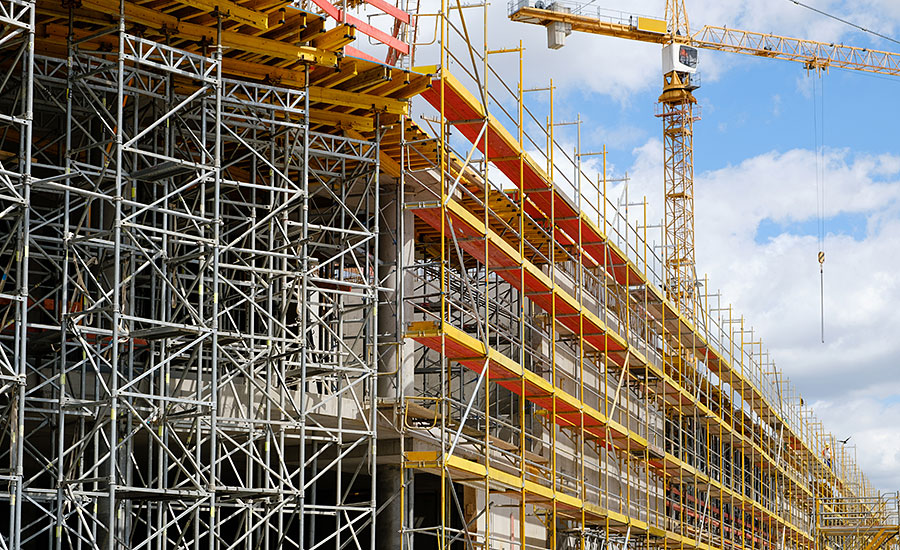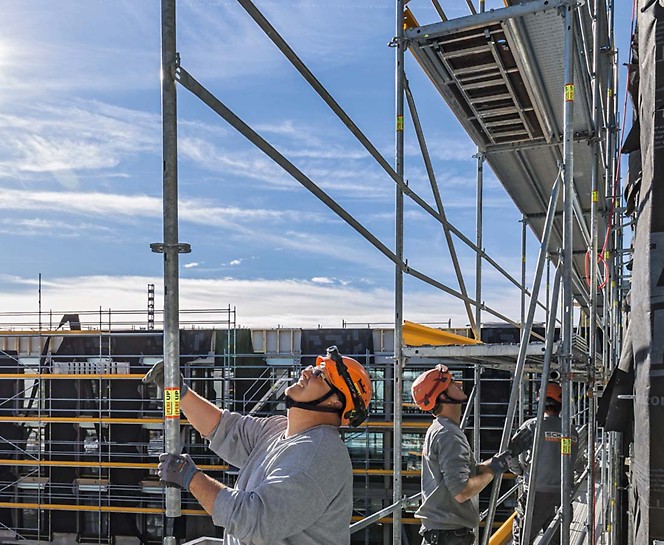Discovering the Numerous Kinds of Scaffolding Used in Construction Jobs
The building and construction market depends greatly on different kinds of scaffolding to satisfy certain task demands, each offering distinctive advantages and applications. Standard frame scaffolding gives a strong foundation for general tasks, while suspended scaffolding is necessary for work on skyscraper structures.

Standard Framework Scaffolding
Standard framework scaffolding is one of one of the most widely used approaches in the construction sector due to its toughness and convenience. This system contains straight and upright frames that are assembled to produce a steady system for products and workers. The major parts consist of vertical articles, straight ledgers, and angled braces, which with each other provide a solid framework that can sustain significant lots.
One of the crucial benefits of typical structure scaffolding is its versatility to numerous building and construction tasks, varying from property structures to big commercial frameworks. The modular design enables simple assembly and disassembly, making it efficient for both long-lasting and short-term jobs. Additionally, the system can be personalized in elevation and width, fitting various building layouts and site conditions.
Safety is critical in scaffolding applications, and typical framework systems are furnished with guardrails and toe boards to protect against drops and guarantee employee security. In addition, normal evaluations and adherence to safety guidelines are important in maintaining the integrity of the scaffold. Overall, standard frame scaffolding remains an essential choice in the building and construction industry, giving a reputable system for labor and improving total job performance

Suspended Scaffolding
Put on hold scaffolding supplies a special solution for building and construction jobs that need accessibility to elevated surfaces, particularly in scenarios where typical structure scaffolding might be not practical. This sort of scaffolding is usually put on hold from the roofing or upper levels of a structure, making use of a system of pulley-blocks, systems, and ropes to develop a working area that can be gotten used to different heights.
One of the main advantages of put on hold scaffolding is its flexibility. It can be conveniently rearranged or reduced to suit changes in building demands, making it optimal for jobs such as window installation, façade work, and upkeep on skyscraper structures. Additionally, the very little footprint of put on hold scaffolding enables far better use of ground space in city settings, where room is usually limited.
Safety and security is a crucial consideration in the use of put on hold scaffolding. Overall, suspended scaffolding supplies a effective and efficient solution for accessing hard-to-reach areas in different construction situations, enhancing both performance and security on website.
System Scaffolding
System scaffolding, commonly considered a modern remedy in the scaffolding market, includes pre-engineered elements that can be quickly constructed and adapted for various building tasks. Scaffolding. This kind of scaffolding is identified by its modular layout, which permits convenience and efficiency on work sites, fitting architectural demands and various heights
Generally made from high-strength steel or aluminum, system scaffolding offers boosted durability and stability. The components consist of upright blog posts, straight ledgers, and angled dental braces, which interconnect safely, making certain a robust structure. The design typically integrates standardized fittings, streamlining setting up and disassembly processes, thus lowering labor time and costs.

Rolling Scaffolding
Moving scaffolding is a flexible option to standard fixed scaffolding, created for wheelchair and ease of usage on construction sites. This kind of scaffolding is composed of a platform sustained by frames with wheels, permitting employees to easily relocate it as needed. The wheelchair function considerably boosts performance, as it reduces downtime associated with assembling and disassembling fixed scaffolding.
Typically created from light-weight products such as light weight aluminum or steel, rolling scaffolding supplies a sturdy yet mobile service for projects needing regular repositioning - Scaffolding. It is particularly useful in jobs such as painting, drywall installation, and electrical work, where accessibility to numerous heights and locations is necessary
Safety and security is extremely important in rolling scaffolding design, with features such as locking wheels to avoid unintentional movement when in operation, and guardrails to shield workers from falls. Additionally, several designs are flexible in height, accommodating different job needs.
Cantilever Scaffolding

The design of cantilever scaffolding typically entails utilizing brackets or arms anchored to a structure or framework, enabling the system to prolong outward securely. Safety is extremely important; thus, these scaffolds must be crafted to withstand numerous tons and ecological conditions. Regular examination and maintenance are important to ensure architectural honesty and worker safety and security.
Cantilever scaffolding is favored for its versatility and effective use space, making it a popular choice in city environments where area restrictions are usual. It helps with less complicated access to high elevations, eventually Click Here contributing to the general performance of construction jobs. Just like all scaffolding kinds, proper training and adherence to security requirements are essential for workers utilizing cantilever scaffolding.
Final Thought
In verdict, the varied sorts of scaffolding utilized in building jobs each serve unique functions tailored to particular website demands. Typical frame scaffolding supplies stability, while suspended scaffolding provides flexibility for scaffolder hiring 2021 raised jobs. System scaffolding promotes fast setting up, and rolling scaffolding boosts mobility for varying job settings. Cantilever scaffolding successfully attends to barriers in metropolitan setups. Understanding these scaffolding types is vital for enhancing security and productivity in building and construction, inevitably contributing to the effective conclusion of jobs.
Standard framework scaffolding offers a sturdy structure for general jobs, while put on hold scaffolding is essential for job on high-rise frameworks.Rolling scaffolding is a functional alternative to conventional set scaffolding, made for wheelchair and ease of usage on construction sites. As with all scaffolding kinds, appropriate training and adherence to safety requirements are vital for workers making use of cantilever scaffolding.
Conventional structure scaffolding offers stability, while suspended scaffolding uses versatility for raised tasks. System scaffolding promotes quick setting up, and rolling scaffolding enhances wheelchair for varying job environments.